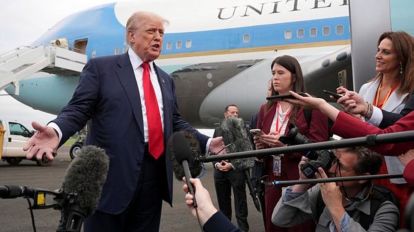Trump Administration Releases Frozen Education Funds After Bipartisan Pressure

The Trump administration announced on July 25, 2025, that it would release nearly $5 billion in frozen K-12 education grant funds. These funds had been withheld since July 1, causing widespread concern among educators and lawmakers. The Office of Management and Budget (OMB) confirmed that a "programmatic review" of the funds is complete, and the Education Department is set to begin distributing the money to states the week of July 28, 2025. This decision follows the earlier release of $1.3 billion for after-school and summer programs on July 18, which was also part of the initially frozen $6.8 billion.
Background: Initial Funding Freeze and Rationale

In March 2025, President Trump signed an appropriations bill passed by Congress that included $6.8 billion for K-12 education. However, on June 30, 2025, state education departments were informed that the administration would withhold these funds, scheduled for disbursement on July 1. The administration cited a "programmatic review" as the reason, stating that it needed to ensure alignment with White House priorities and that some programs subsidized a "radical leftwing agenda."
Congressional and Public Opposition to the Freeze

The decision to freeze the funds was met with immediate and significant opposition from both Republican and Democratic lawmakers. A group of 10 Republican senators sent a letter to the Trump administration in mid-July, urging the release of the funds and emphasizing their importance for local communities. Senator Shelley Moore Capito (R-WV) stated that the programs "enjoy longstanding, bipartisan support."
Senator Patty Murray (D-WA) criticized the administration's handling of the situation, stating, "There is no good reason for the chaos and stress this president has inflicted on students, teachers, and parents across America for the last month."
Education organizations and unions, including the School Superintendents Association (AASA), the National Education Association (NEA), and the American Federation of Teachers (AFT), also heavily lobbied for the release of the funds, expressing strong criticism of the delay.
Impact on Schools and Students

The delay in funding created significant budgetary challenges for state education departments and school districts. An AASA survey found that nearly 30% of districts needed access to the withheld funds by August 1 to avoid cutting programs and services. Survey respondents also indicated they would have to notify parents and educators about program losses by August 15 if the funds remained frozen.
Becky Pringle, President of the National Education Association, stated, "These reckless funding delays have undermined planning, staffing, and support services at a time when schools should be focused on preparing students for success."
The Contentious "Programmatic Review"

The central point of controversy was the Trump administration's decision to withhold congressionally appropriated funds for a "programmatic review." Critics argued that this action constituted an illegal impoundment of funds and an overreach of executive power, violating the separation of powers. Two lawsuits were filed against the administration to force the release of the funds.
In justifying the release, a senior administration official told K-12 Dive that "guardrails are in place to ensure these funds will not be used in violation of Executive Orders or administration policy."
Breakdown of the Frozen Funds

The initially frozen $6.8 billion included several key areas of K-12 education:
- $2.2 billion for Title II-A: professional development for teachers.
- $1.4 billion for Title IV-A: student support and academic enrichment.
- $890 million for Title III-A: English-learner services.
- $375 million for Title I-C: migrant education.
- Approximately $729 million for adult basic and literacy education.
- $1.4 billion for Title IV-B: before- and after-school programs (released earlier).
GAO Decision on HHS Funds

Adding to the pressure, the nonpartisan Government Accountability Office (GAO) determined this week that the U.S. Health and Human Services Department illegally impounded crucial funds from the Head Start program, setting a precedent that may have influenced the education funding decision.
Potential Consequences of the Freeze (Averted)
Although the funds are now being released, the potential consequences of the freeze highlighted the critical role they play in education:
- Elimination of academic services, particularly for vulnerable student populations (e.g., English language learners, migrant students).
- Teacher layoffs and larger class sizes.
- Disruption of after-school and summer programs crucial for working families and student enrichment.
- Financial strain and uncertainty for state and local education budgets, leading to cancellation of contracts and delayed hiring.